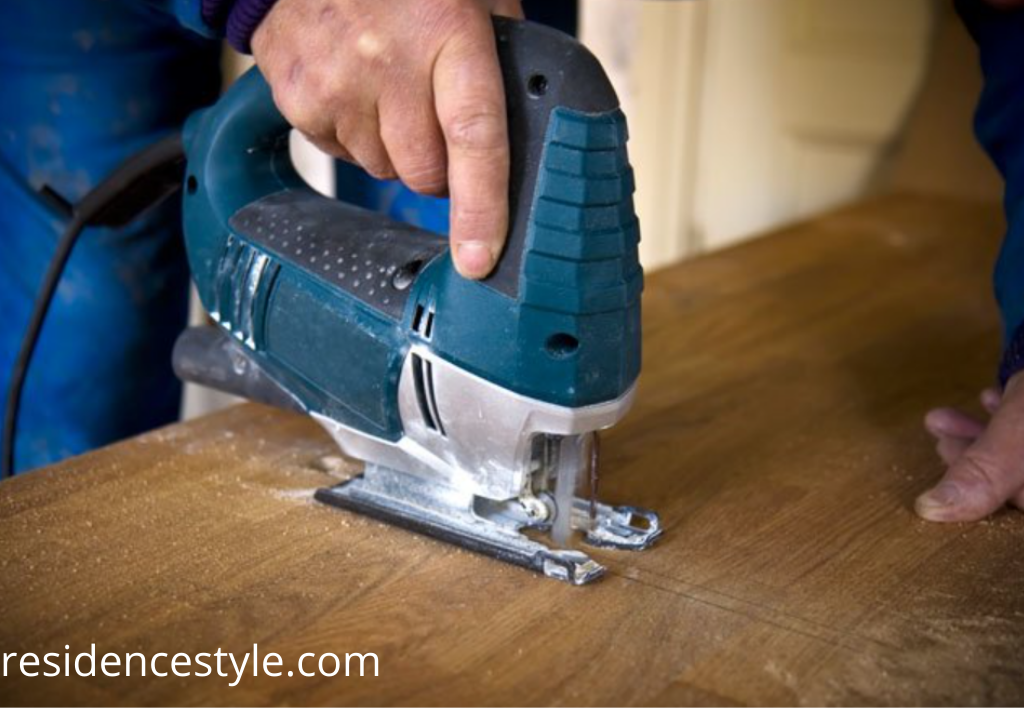
How to Use a Jigsaw?
While a table saw or circular saw won’t work, a saw’s primary purpose is to cut curved lines in various materials, including fine metal, laminate, plastic, and even ceramic tile as wood (exceptionally soft types. like pine). If you only use the saw occasionally, you can probably use a less expensive model. Once you’re ready, follow this guide to learn how to safely use your jigsaw and get great results on all types of projects.
Choose the correct code for the job
The saw blade package will specify the material the blade is designed to cut, with the word “wood” or “metal” mentioned directly on the label. Top TPI cuts more slowly to create smoother finishes. Another consideration is the proper width of the blade. Determine the width that fits well with the curves you are missing. Jigsaw blades are available in two widths, ¼ “for cutting narrow radius curves and 3/8” for more progressive curves. Lastly, know the teeth’ orientation: a standard saw blade has upward-facing teeth to cut the path of the edge upward; It is the best all-purpose cutting option.
Put safety first!
Do not provide adequate eye protection and connect an extension cord because the saw cords are relatively short. Keep the extension cord out of the cutting path and not allow it to gather in the standing area as it could become a tripping hazard.

Put your shoes on firmly
The shoe, which is a flat base that extends a few inches beyond the front, sides, and back of the blade, must lie flat against the material it extends to ensure a precise cut. Place the front end of the shoe on the material you want to cut and align the cutting guide on the front of the shoe with the line you marked on the material, but do not let the saw blade touch the material before it the best jigsaw is running. Holding it back slightly, turn the tool on, and then loosen the jigsaw forward to begin cutting. If the blade touches wood when the saw is running, the blade can jam into the wood, shake the saw, break the edge or cut in the wrong place.
Drill first to cut the center holes
To poke a hole in the center of the material instead of bending an edge, such as a sinkhole in a countertop, make a starter hole before using the saw. Drill a 1-inch hole, then insert the saw blade into the hole and start cutting there. Do not operate the saw until the blade reaches the spot, and the shoe rests against the surface of the material.
Panel material based on wood in plywood
Attempting to cut sheet metal or hard plastic without reinforcing it can cause jagged edges and bend the product. The best way to cut this material is the first to place it between thick pieces of plywood. Secure the joints with clamps and then carefully spread them across all three layers. The sandwich method gives you the cleanest cut on thinner board materials.

Protect finished surfaces from scratches
For example, wood countertops can be scratched if the saw shoe’s bottom scrapes the surface while cutting. If your material comes with a protective film, please leave it on during the cutting process. If you need to cut raw material, cover the area to be cut with tape and draw cutting guides on top of the tape. This will protect the surface from scratches while cutting.
Sets the angle of the bevel
Not all mounting saws offer this feature, but they are useful if you want to create a bevel.
Speeds up the cutting process
When the “wiggle” feature often found on high-end mount saws is activated, the blade moves forward / backwards, up and down. Oscillating blades provide additional cutting force and speed without increasing the risk of edge burrs and chips.
Take your time when cutting tile
While professionals generally use a tile saw for this job, DIY enthusiasts can use a jigsaw on tiles about an inch thick. If you intend to learn how to use a jigsaw on tile rather than investing in another new power tool, start by applying masking tape to the tile’s face or the underside of the shoe of the saw to avoid scratches on the surface. Then use the corresponding tile cutter and secure the tiles to prevent it from moving. Cutting tiles with a jigsaw requires patience and a steady hand.




